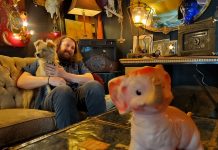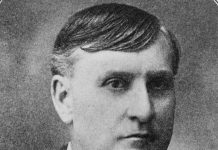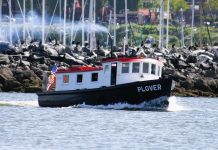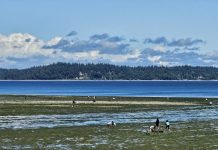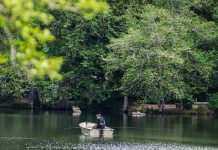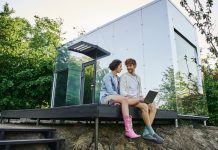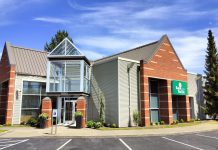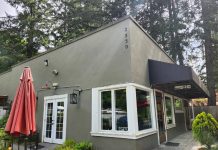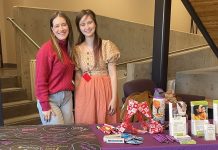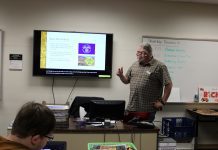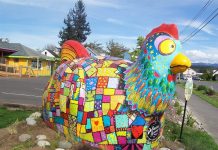Informal cooking “schools” were popular in the early 20th century. In August 1913 the American Reveille and Bellingham Herald newspapers brought Mary Lewis Haines to teach free classes.
During this time, the American diet was rapidly changing as food production became more processed and mechanized. A group of college-educated women brought together new technology and advances in nutrition science. New York’s Mary Haines was one of these “domestic scientists.” Later called home economists, the women researched, wrote, and taught. Some worked in schools while others, like Haines, toured the country giving lectures and demonstrations. And they revolutionized how people ate.
In Bellingham, classes were held at the Walk-Over Shoe Store in the Exchange Building, 1248-60 N. State Street. Haines stood in the front of the classroom on an elevated platform transformed into a kitchen. A woman was hired to assist and wash dishes.
Haines’ classes were geared towards young women and inexperienced cooks. Her focus on simple, economical, and “healthful” food reduced the cost of living, especially using leftovers and inexpensive meat cuts. Good home cooking, she argued, was the foundation of a thriving society.
Students were encouraged to ask questions or put them in the question box. They were told to bring a notebook and pencil to write down recipes as well as a small dish and spoon to sample recipes.
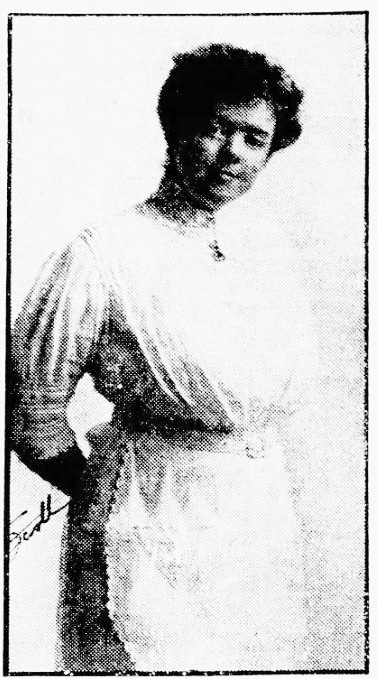
Week 1
Haines opened her school on Wednesday, August 6, with “Twenty Ways to Cook Hamburger.” 150 women attended. The next day she made meat croquettes with leftovers, “sunshine” cake with butter icing, and boiled rice. On Friday she fixed “veal bird,” steak creole, steak country style, onions stuffed with nuts, and “potato surprise” using leftover mashed potatoes.
Week 2
Classes resumed on Monday, August 11. Haines introduced her specialty, “two-hour bread.” It was, she promised, equal to “what mother used to make” — but less work. She also demonstrated devil’s food cake, stuffed pork tenderloin, and medallions of halibut with perigueux sauce.
The next day she served corn oysters, raspberry shrub, “frite” of chicken, and Northwest Fruit Cake “dedicated to the ladies of the Pacific Northwest.” She also made two-hour bread from Roman Meal.
August 13 brought chicken a la king, potato cake, fruit gelatine with dressing, and potatoes au gratin. Audiences learned the next day how to make chicken croquettes chicken supremes from leftovers, as well as poor man’s rice pudding and steamed pudding.
Haines ended the week with fruit gelatine, rice cheese croquettes and “porcupine pudding” using leftover cake for the body and almonds for the quills. The instructor billed her macaroni a L’Italiene as the “ideal meal,” and made pumpkin pie by audience request.
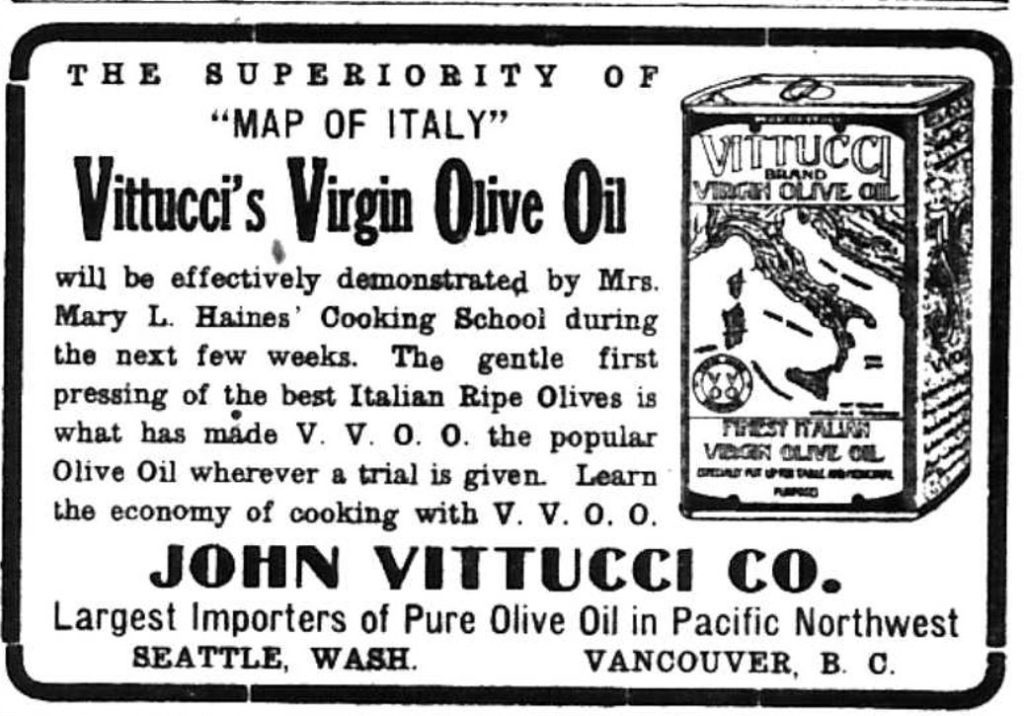
Week 3
Haines opened the class on Monday, August 18 by remaking her two-hour bread. She covered salad dressings, cheese mayonnaise, and spaghetti royale. She also demonstrated planking leftovers and how to make celery stuffed with cheese mayonnaise.
The next day she shared recipes for halibut cutlets with sauce tartare, mint jelly to serve with lamb, white fruit cake, marshmallow fudge frosting, sandwiches and onions stuffed with nuts served with cream sauce. She also made two-hour bread again. On August 20 she made cream puffs, German pot roast, boiled mayonnaise, onions stuffed with nuts and served with cream sauce, raspberry pie, and fruit meringue pie.
The next day she demonstrated boiled fruit cake, lamb kidneys country style, boiled mayonnaise, chicken salad and marshmallow trifle. Haines ended the week by making meat pie using leftovers, pineapple tapioca dessert, salmon souffle and shrimp salad. She also served “soft gingerbread,” using a recipe given to her by a Bellingham woman. She liked to collect new recipes!

Final Week
Haines’ final week began on Monday, August 25 with lemon pie, halibut en blanquette, cheap mock angel food cake, and fruit punch. She also made regular angel food cake and lemon pie “by request.” The next day she demonstrated “cheap” layer cake, fruit rock from Roman Meal, sandwich royale, chocolate triangles, and fried chicken Spanish style.
On August 27 Haines made cheap layer cake, English walnut cakes, veal oysters, and surprise beef biscuits. The next day she roasted nuts as a meat substitute and made oyster sausage, sweet potato balls, and “Palace salad.”
Haines held a bread baking contest on her last day, Friday August 29. Free 10-pound sacks of Bellingham Flour Company’s “Quality Flour” brand were offered to contestants. They could use any recipe they wanted. Over 100 loaves were entered, baked fresh that morning. Local women judged the results.
“There was not a loaf there that the maker could be ashamed of,” Mary Haines proclaimed.
The six top winners got free flour and their recipes printed in the newspaper. The first three also won cash. Young women had their own contest.
At the end, the judges voted three cheers for the contestants — and another for Mary Haines.
Haines Returns
Haines would return to Bellingham — that “hospitable little city” as she called it — in December to sell her brand new book, “Helpful Hints for Housewives.” It was published by the Recorder Press of Olympia.
Although Mary Haines’s time in Bellingham was short, her students had learned much. Women like Haines, with her emphasis on science and education, helped transform American cooking into what it is today.
“Try to get away from the beaten paths in cooking,” she told her audience. “Learn to experiment with the familiar dishes that you have all grown tired of. You will find that cooking is not so monotonous when you vary it from the ways you have been cooking for so long.”
Feature images created by AI

